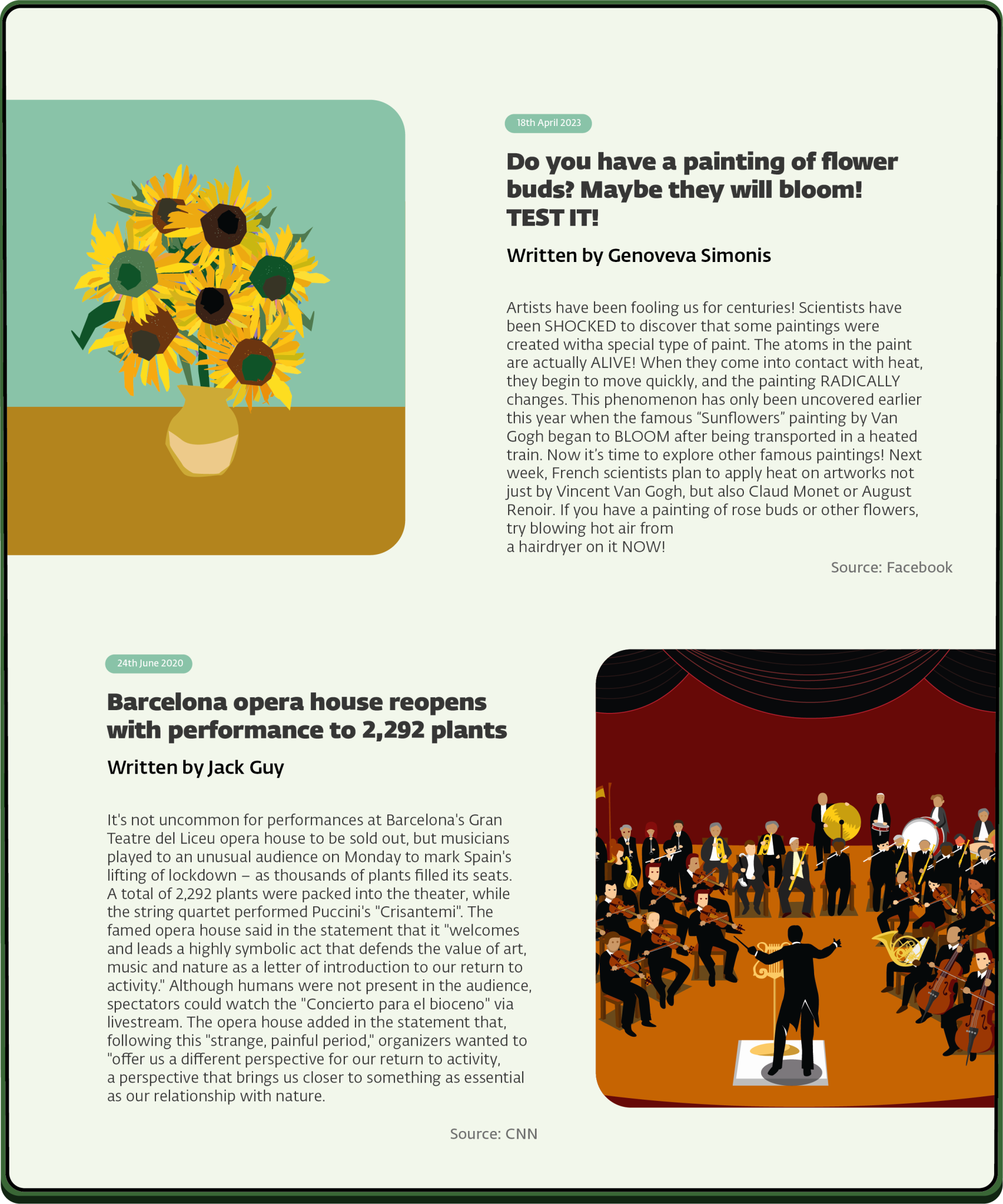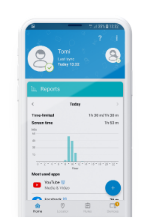How to play?
Look at the two stories below. While one informs us about things that actually happened, the other is a hoax – a piece of false information written in order to confuse the reader. Encourage your child to read the two stories carefully and decide which one is real. When they know the answer, they can check it in the solution.

Solution
Did you spot the hoax? If you guessed that the first story is fake, you were right. How did you figure it out? There were many hints. Let’s look at some of them.
1. What about the headline?
The headline of the second story may be surprising, but still it is written in an objective and informative tone. The hoax story, on the other hand, has a sensational headline with very little information about the text itself. Instead of being informative, it attracts readers’ attention with a question, multiple exclamation marks and capital letters. This type of headline does not always denote that the information that follows is a hoax, but when combined with other suspicious aspects, it can be a sign of the text’s questionable credibility.
2. When was it written?
The date of the first story shows it was written quite recently. Why is that important? A recent date may simply suggest that this piece of information is very new. But we also need to remember that hoaxes are usually short-lived. They may be on the internet for a short moment and then disappear – only to re-emerge later. The date of the first story, on the other hand, suggests that the article has been on the internet for quite a while.
3. Who is the author?
If you search for Jack Guy, the author of the second article, you may find that he is a freelance journalist writing for multiple platforms, including CNN. But when you search for Genoveva Simonis, you will find… almost nothing. Why? The name was created by an AI generator. With hoaxes, it is common that their author is either nonexistent or unknown.
4. Where did the story come from?
While the second story was shared on the official website of CNN, a popular news channel, the first comes from Facebook. Social media allows their users to share their thoughts freely, which means that these platforms are fertile ground for hoaxes and other forms of disinformation. On social media, hoaxes can spread quickly and reach a wide audience before getting deleted. This is also why scammers and fraudsters often create numerous fake profiles to spread false information more easily.
5. How is it written?
What is the most noticeable difference between the two stories? Their style and tone. While the second story may be hard to believe, it is written in an informative tone and includes multiple quotes that explain the event. On the contrary, the first story contains several aspects that should raise your suspicion. The tone is more emotional and sensational, which is emphasized by the use of exclamation marks and capital letters. This style of writing is typical for tabloids, but also hoaxes. Moreover, the text encourages the reader to take action and tries to establish its veracity by mentioning scientists as the source of information, but it never specifies who those scientists are. Finally, apart from the fact that the whole story is fictional, the first text also contains factual inaccuracies – for example, there are no living or dead atoms.
How to spot a hoax?
READ IT
Did you read the whole story? Sometimes, headlines may try to trick us into believing something that isn’t true.
Does it have the typical attributes of a hoax? Look for:
- shocking information
- sensational language
- overuse of exclamation marks
- whole words or phrases written in CAPITAL LETTERS
- unknown source or author
VERIFY IT
Can you find this piece of news on other, known and reliable websites? If it appears in respected media or is shared by a government authority or educational institution, it is more likely to be true.
Can you find the author? If the story was only shared on social media and the source is unknown, it is probably not true.
Is there a photo or a video? And if so, is it real? Photos and videos can easily be altered or even generated by an AI model to show things that never happened. Read more about how to verify photos and videos.
- Do you need help checking? Ask a trusted adult to help you.
DON’T SHARE IT
- Do you still have doubts? Then wait. Confirm the story before sharing it.
Was your answer correct? Congratulations! But even if it wasn’t, we don’t blame you. The Internet is full of stories that may be hard to believe, and sometimes it is truly challenging to spot which are true and which were created only to confuse us. In the future, you can always remember this rule: READ IT, VERIFY IT and DON’T SHARE IT before making sure it’s not a hoax.



